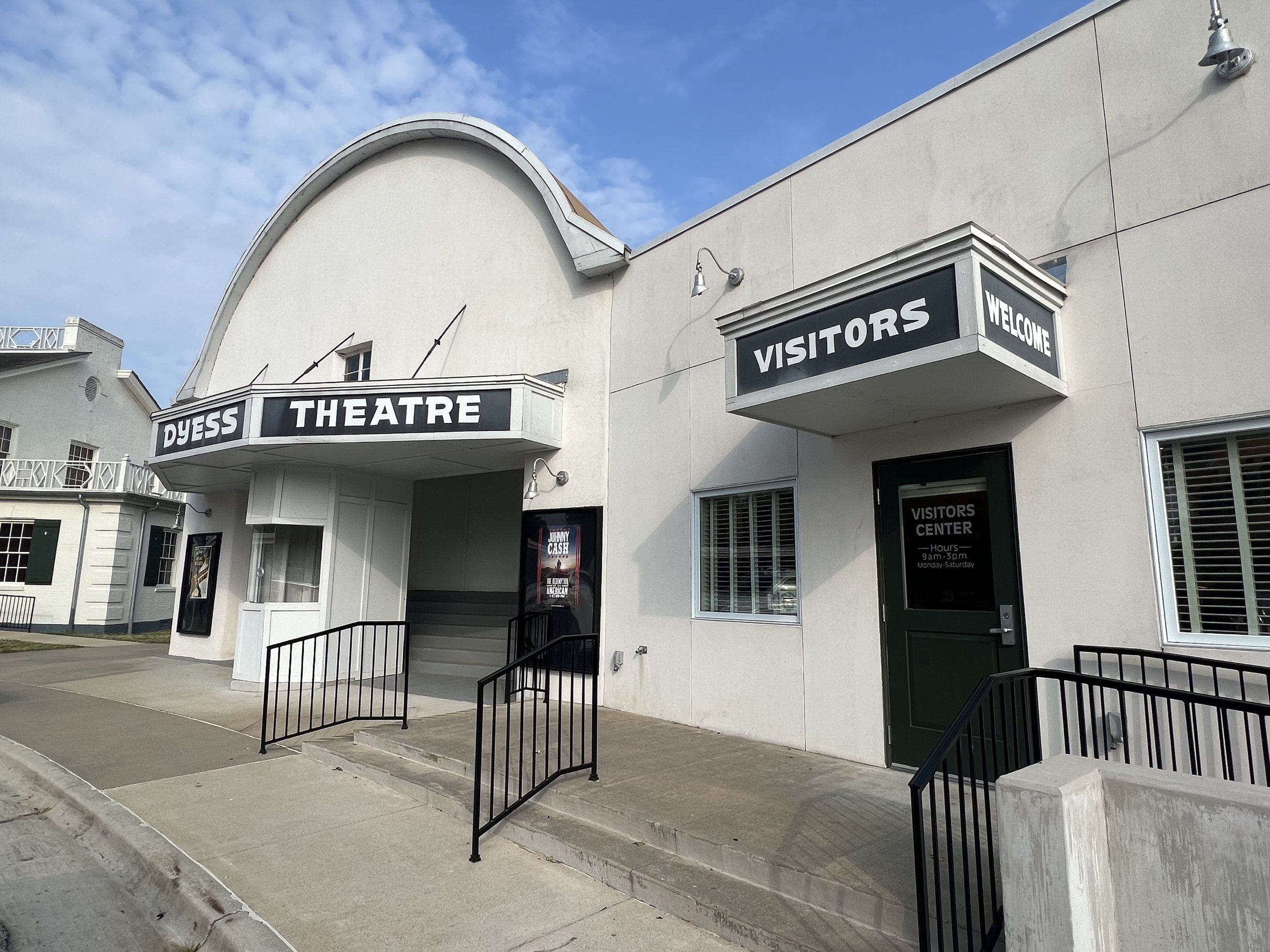Dyess Colony: Johnny Cash’s Boyhood Home
You may be wondering how a house on a gravel road in the small town of Dyess, Arkansas (population 288) could be used as a learning tool. Dyess Colony was established in 1934 as part of Roosevelt’s New Deal program. The 16,000-acre colony was designed to resemble a wagon wheel. Today, students can explore the heart of the colony, that included the Administration Building, a grocery store, supply center, café, and repair shop.
In 1935 the Cash family moved to house number 266. Johnny (originally J.R.) was only 3 years old. He graduated from Dyess High School and later returned to perform a concert at the high school gymnasium. Throughout his life in Dyess, Johnny experienced a flood, death of his 15-year-old brother Jack, and many other circumstances he wrote about in his music. For instance, the song “Five Feet High and Rising” was based on the 1937 flood. His gospel albums were a tribute in part to his brother wanting to be a preacher. The history of Dyess Colony, along with the Cash family, hold many stories and learning opportunities.
Student Exploration
Students visiting the Dyess Colony will walk through the center of community life at Dyess by taking a guided tour of the town’s theater and administration building. Exhibits describe the development of the Dyess colony & other planned housing developments throughout the state as a part of a New Deal economic recovery project. Videos & informational panels guide students through 1920s-30s Arkansas and how natural events like floods & droughts impacted the state during a time of financial turmoil for the country. They will view artifacts from the people who lived in Dyess and learn how individuals and families lived during that time period.
When touring Johnny Cash’s family home, students see a real example of a family home in 1930s Arkansas. The home has two modest bedrooms, a dining room and kitchen with traditional dishware & a wooden cook stove, and a Springer radio in the living area where Johnny Cash would spend hours listening to music. Students can imagine what life would’ve been like living with their families in one of the 500 Dyess homes and think about how the land, home, and history inspired Cash’s music.
Lyrical Analysis Activity
For a great classroom activity that connects to this site, try a music lyric analysis with your students. Using three of Cash’s works, Crowley’s Ridge (poem), Five Feet High and Rising (song), & Pickin’ Time (song) have students read through the lyrics for each work & listen to Cash perform the music. Have students make connections between the Arkansas history they explored and what Cash talks about in his lyrics. Lead a discussion about where students can “see” Arkansas in Cash’s words and stories, and how our natural environments, families, and communities impact our lives.
The museum has a variety of additional resources for K-12 educators as well. Explore them further by visiting https://arkansasheritagesites.astate.edu/
For information on booking a class field trip to this these historic sites, reach out to site director Penny Toombs at ptoombs@astate.edu.
Grant Funds Available
K-12 teachers, did you know there is grant funding available for field trips to historic Arkansas sites? The Arkansas Humanities Council provides Arkansas teachers funding for a variety of educational programs like field trips & class experiences! Learn more about AHC grants here: https://arkansashumanitiescouncil.org/grant-guidelines/grant-descriptions/






